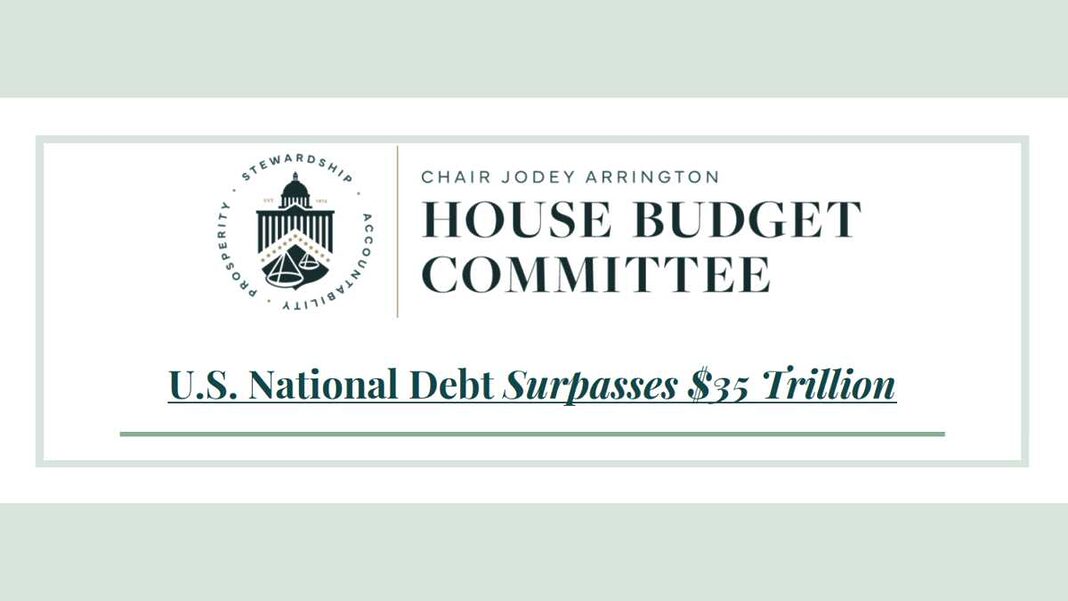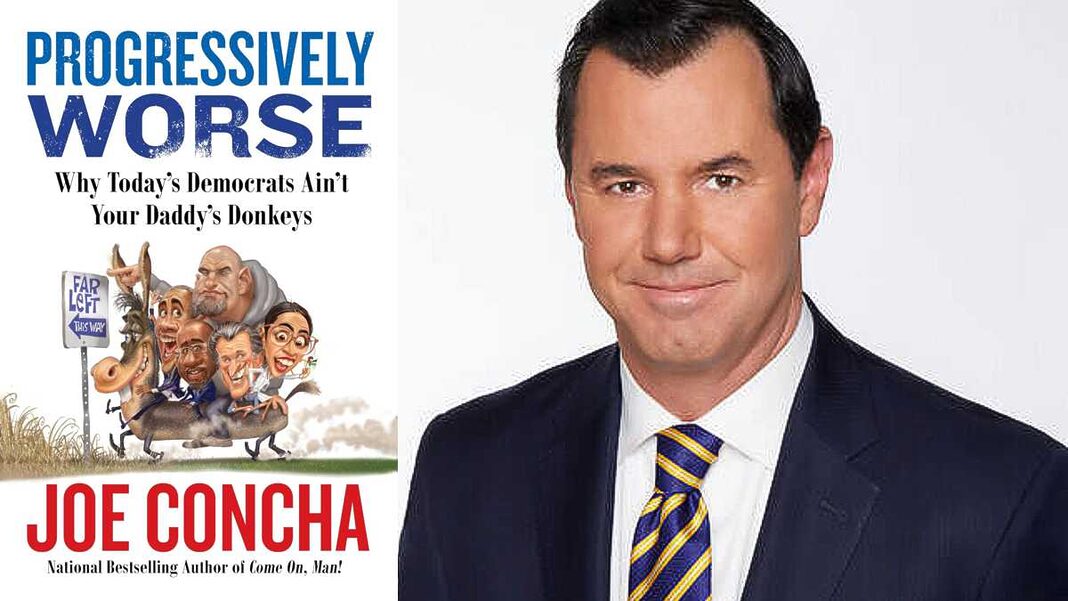Servicing the owed interest is now the second-largest budgetary item, topping national defense outlays.
In a historic fiscal milestone for the federal government, the national debt rose to $35 trillion for the first time, according to the latest Treasury Department Debt to the Penny data.
Current debt levels are equal to $105,000 per person and $266,000 per U.S. household.
Washington accumulated another $1 trillion in debt in less than seven months. Over the past 12 months, the national debt has spiked by nearly $2.35 trillion, an average of about $6.4 billion per day.
House Budget Committee Chair Jodey Arrington (R-Texas) is calling the announcement “another dubious milestone in the fiscal decline of the most powerful and prosperous nation in its history.”
Since January 2021, the national debt has increased by about $7.3 trillion.
The immense growth of red ink flooding the nation’s capital has captured the attention of public policymakers.
In a February interview on “60 Minutes,” Federal Reserve Chair Jerome Powell conceded that the federal government is “on an unsustainable fiscal path.”
“And that just means that the debt is growing faster than the economy. So, it is unsustainable. I don’t think that’s at all controversial,” Mr. Powell said.
Two of the big three credit agencies—Moody’s Investors Service and Fitch Ratings—downgraded their outlook on the U.S. debt, citing fiscal deterioration, persistent debt ceiling negotiations, and ballooning interest payments.
When these updates were released last year, the White House disagreed with the firms’ outlooks.
“While the statement by Moody’s maintains the United States’ AAA rating, we disagree with the shift to a negative outlook. The American economy remains strong, and Treasury securities are the world’s preeminent safe and liquid asset,” Deputy Treasury Secretary Wally Adeyemo said in a statement.
In recent months, Treasury Secretary Janet Yellen has offered mixed assessments of the country’s fiscal situation.
Earlier this year, Ms. Yellen told lawmakers, “We need to reduce deficits and to stay on a fiscally sustainable path.”
However, in a June 13 interview on CNBC, she said that “we’re in a reasonable place” as long as “the debt is stabilized relative to the size of the economy.” She also referenced the real interest cost of the debt.
By Andrew Moran








